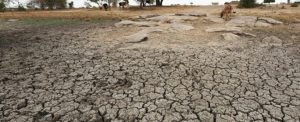The Unjust Climate : FAO Report

The Food and Agriculture Organization of the United Nations (FAO), has released a report titled- The Unjust Climate, shows how the effects of Climate Change on income and adaptation in rural areas vary with gender, wealth and age.
- FAO analyzed socioeconomic data from over 100,000 rural households representing more than 950 million people across 24 LMICs (Lower Middle Income Countries).
- The study integrated this information with 70 years of georeferenced daily precipitation and temperature data to examine the impacts of climate stressors on incomes, labour, and adaptation strategies, differentiating based on wealth, gender, and age.
- Every day of extreme heat results in poor rural households losing 2.4% of on-farm incomes, 1.1% of crop value, and 1.5% of off-farm income compared to non-poor households across India and 23 other LMICs (Lower Middle Income Countries).
- A 1°C increase in long-term temperatures would push rural poor households to rely more on climate-dependent agriculture, leading to a 33% decrease in off-farm incomes.
- Similarly, every day of extreme Precipitation causes poor households to lose 0.8% of their incomes relative to non-poor households, mainly driven by losses in off-farm incomes.
- In an average year, poor households lose 5% of their total income due to Heat Stress and 4.4% due to floods compared to better-off households.
- Floods and heat stress widen the income gap between poor and non-poor households in rural areas by approximately USD 21 billion and USD 20 billion a year, respectively.
- Extreme weather events push poor rural households to adopt maladaptive coping strategies, including distress sale of livestock and redirecting expenditures away from their farms.
- Less than 1% of Nationally Determined Contributions (NDC) and national adaptation plans (NAP) of the 24 analysed countries mention poor people, and only about 6% refer to farmers in rural communities.
- Only 7.5% of tracked climate finance in 2017-18 went towards climate change adaptation, with less than 3% allocated to agriculture, forestry, and other land uses.




